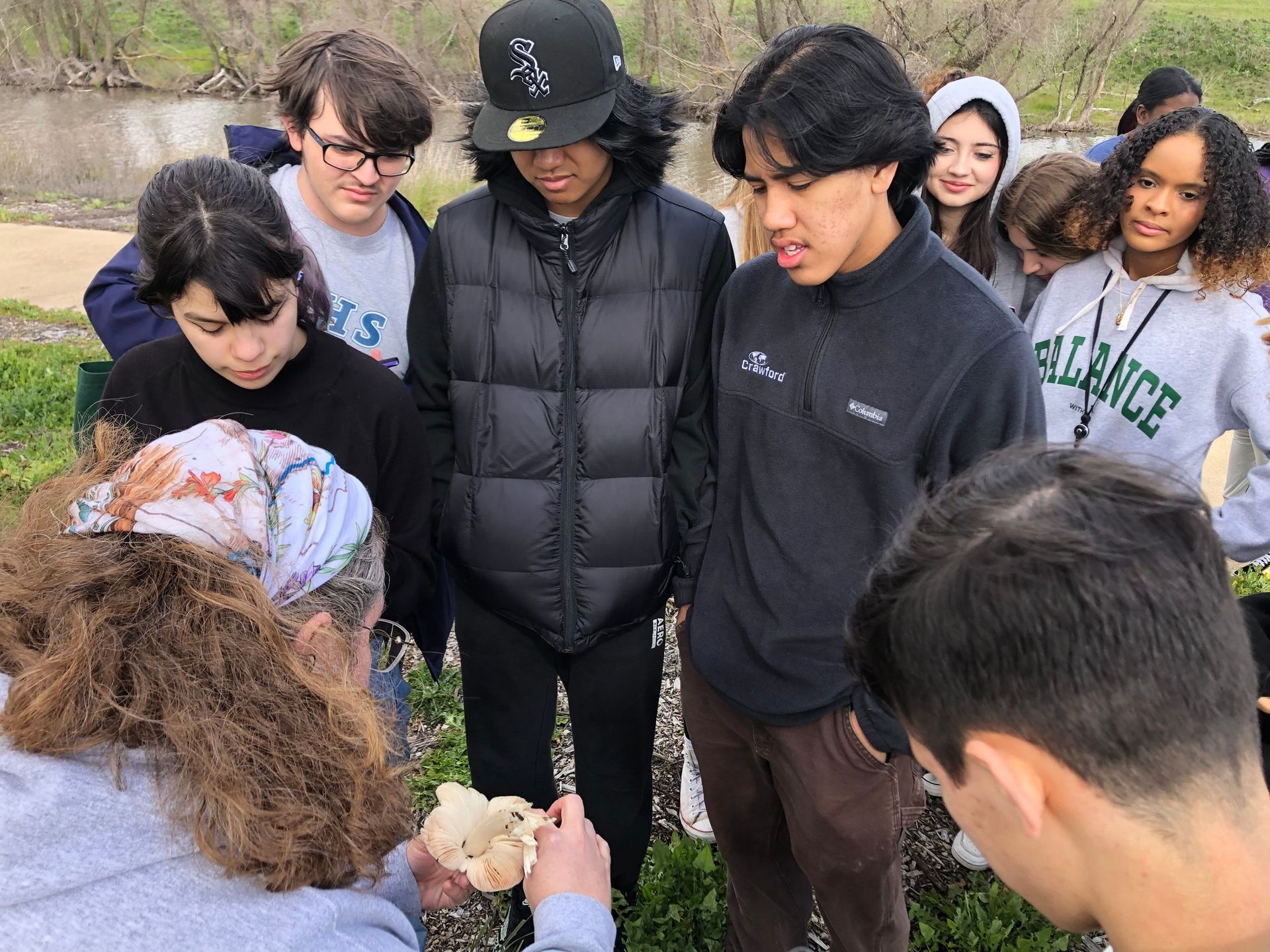Westlake Charter Field Trip

On March 7th, Dr. Galloway’s 9th grade class from Westlake Charter School in Natomas visited the Woodland Regional Park Preserve to learn about urban park transformations as part of their Planting a Revolution class. The Planting a Revolution class is focused on learning about sustainable agriculture and environmental practices while also developing farm to fork cooking skills. Students in this class are combining biology, chemistry, and food science with practical, hands-on skills training and field work.
During our field trip, students participated in several observational data collection activities, making note of the sites and sounds common to an urban preserve where nature meets urban residence. Students charted the noises they heard from bird calls to cars on the nearby roadway and discussed the impact that having urban noises so close might have on wildlife. Students also made observations of the plant and animal life throughout the preserve, noting the differences between different regions of the park. Their observations included everything from topography to plant type and size. Students then made claims about the cause of the differences, concluding that differences in water availability may be a large factor.
While we were able to cover a lot information during our field trip and discuss the relationship between nature preserves and food systems, the highlight of the trip came early on when students discovered that they would be able to take out a pair of binoculars on the hike… and that there were enough binoculars for everyone! The students were simply delighted to learn that everyone could use a pair of binoculars saying “you have enough for everyone?” And they did not miss an opportunity to use them, either! Students were able to view the nest of a red-tailed hawk, Canada Goose swimming in the middle of the pond, and another visiting class further along the path.
Another highlight of the trip was spotting some bones in the preserve. Using their binoculars, students found the bones and asked if we could check them out, so we detoured a bit and headed that direction. Students observed the bones and engaged in a truly inspiring conversation, trying to figure out what animal the bones belonged to. They found the spine and determined it was a mammal, and examined the teeth and concluded that it was an herbivore. In the end, they decided it probably belonged to a cow… and they were correct. Watching them work through the process of critical thinking and deduction was really incredible though!
The trip ended with a discussion about our watershed and water in our area. We meandered our way back towards the bus, stopping to look at various things and take pictures. In the end, students said they didn’t want to leave, which is a true testament to the wonder of the Woodland Regional Park Preserve.
-Kara Green (kgreen@tuleyome.org)
Education Associate
Certified California Naturalist
RECENT ARTICLES






